Order Euomphalida de Koninck 1881
Superfamily Euomphaloidea de Koninck, 1881
Family Euomphaidae White 1877
Genus Amphiscapha Knight, 1942
Common in both locales, these gastropods appear as small spiraled discs. They also resemble cephalopod morphology, often begging a description using cephalopod terms. The whorls are circular in cross-section, but Knight (1934) illustrated a thin section showing the thickening of the prismatic layer at the angulations, or the top and bottom outside corners of the whorl, forming the carinae. The spire is flat to depressed.
Most dimensional specimens free of matrix show a concave spire and a flattened base. Specimens from locality SL 6445 (Brush Creek) are preserved in shale, preserving fine details, but are challenging to remove. In contrast, examples from locality SL 6533 (Pine Creek) usually fall out of the topmost limestone layers as whole discs.
Most specimens are likely Straparollus (Amphiscapha) catilloides (Conrad, 1842), which Hoare et al. (1997) reported from all of the Glenshaw Formation in the Appalachian Basin. Burke (1962) named another local species, Straparollus (Amphiscapha) elleri, from the Woods Run limestone across the river from Leechburg, in neighboring Westmoreland County. Burke called his new species “the smallest known species of Amphiscapha,” with a maximum width of 1 cm.
Most photographed specimens show a basal view because the matrix often clings to the depression created by the concave spire. It can be challenging to determine which way is up when you first encounter one, but if the aperture opening points clockwise around the axis, you are looking down at the top or spire.
Amphiscapha Plates
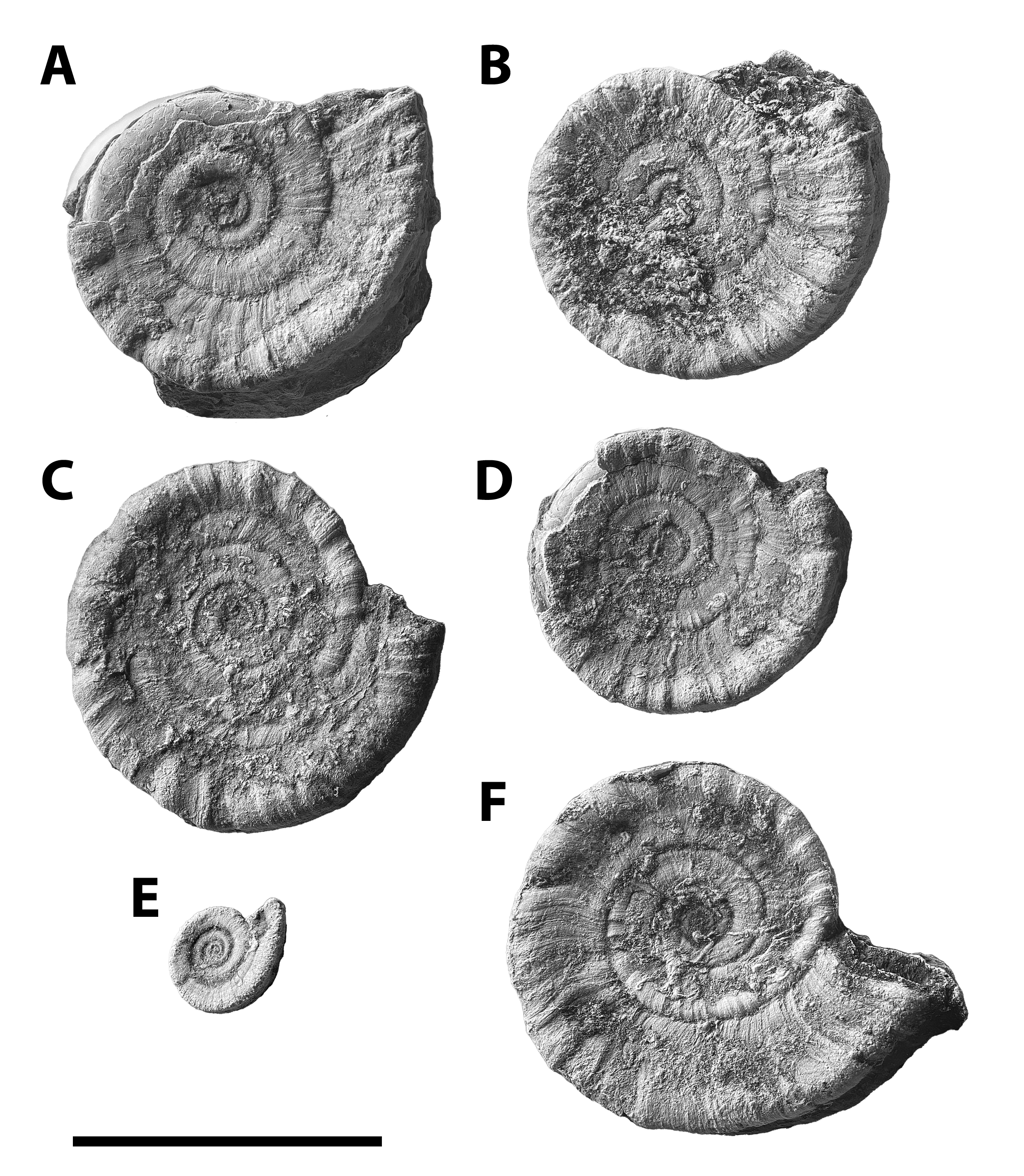
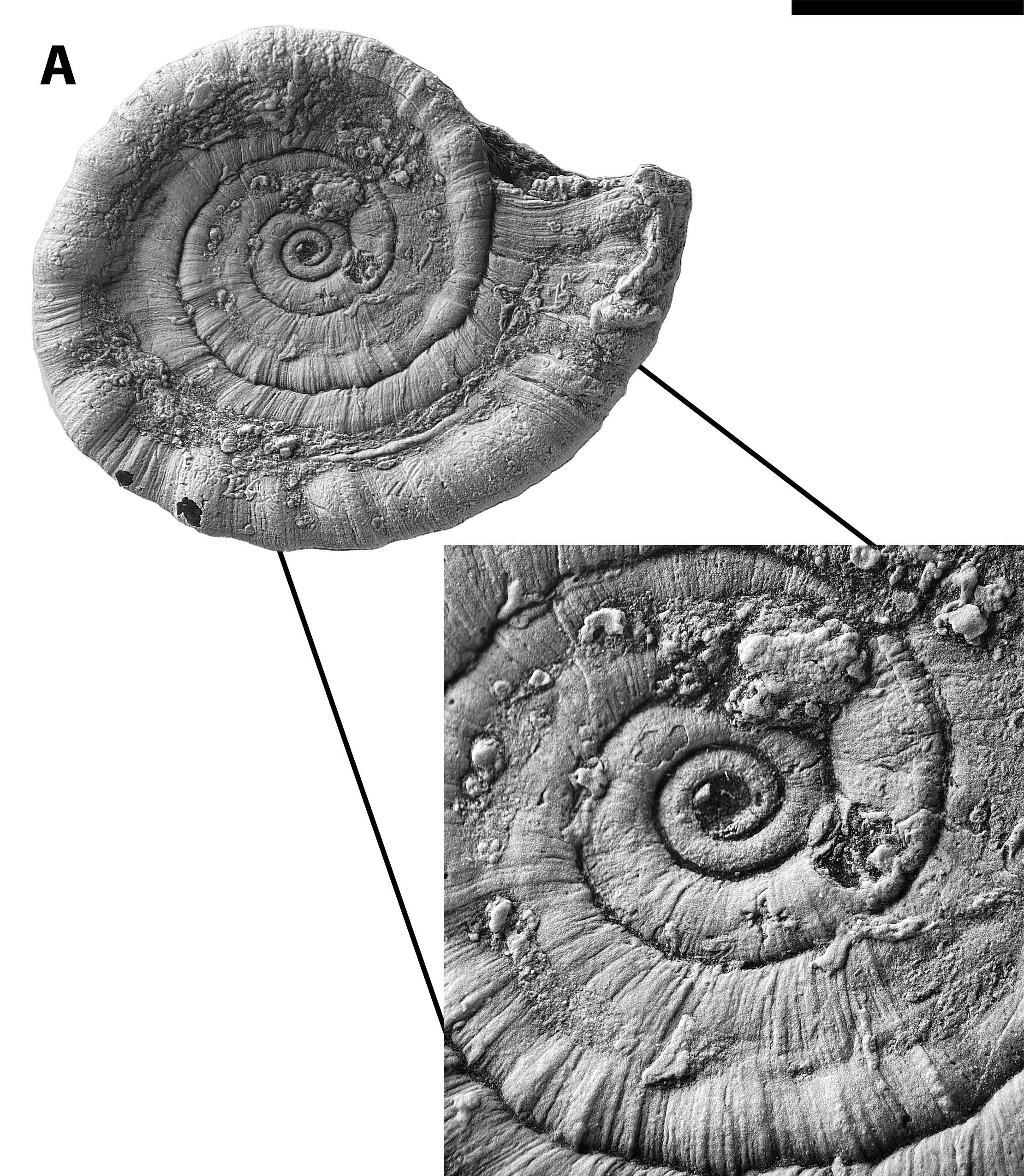
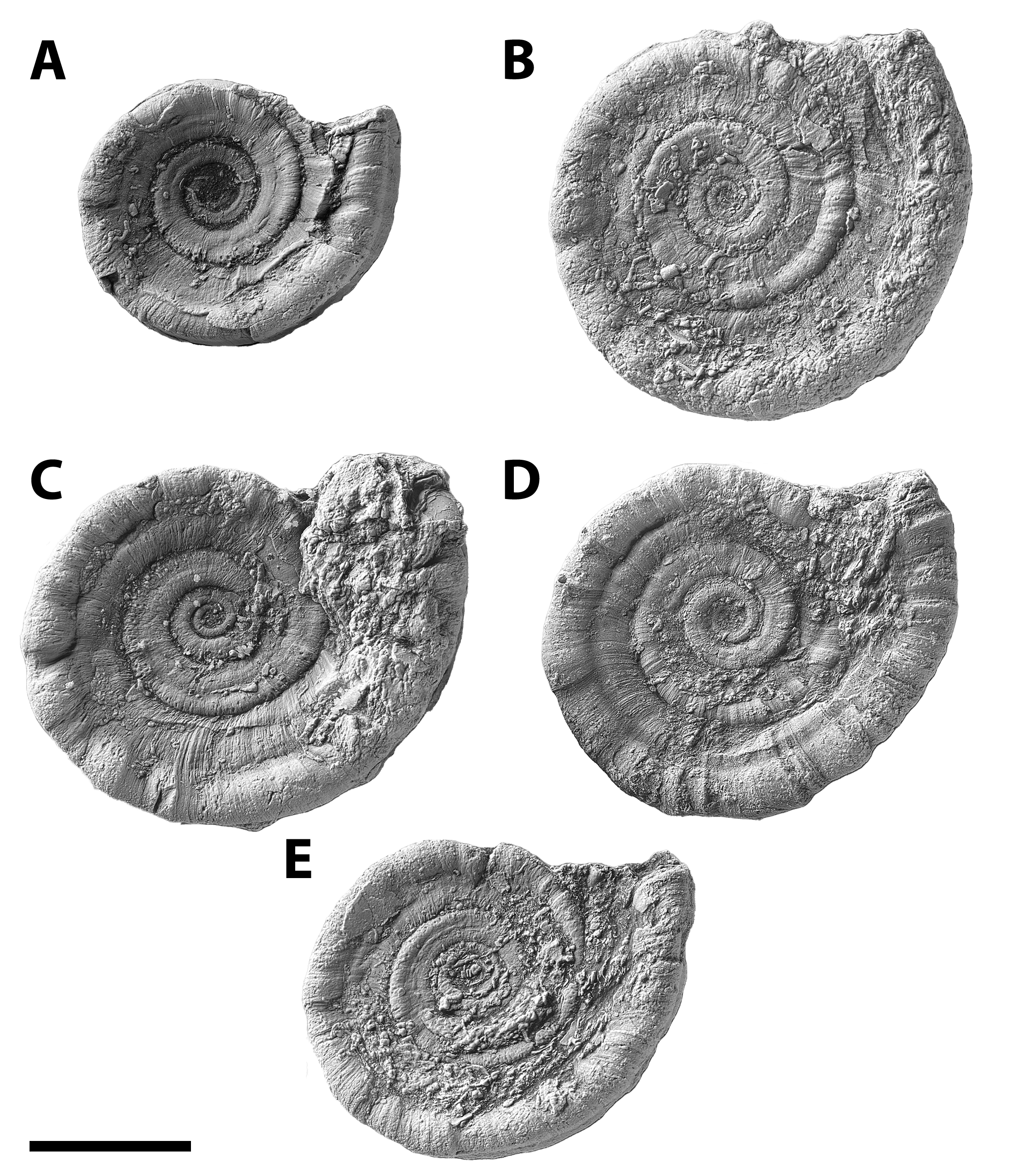
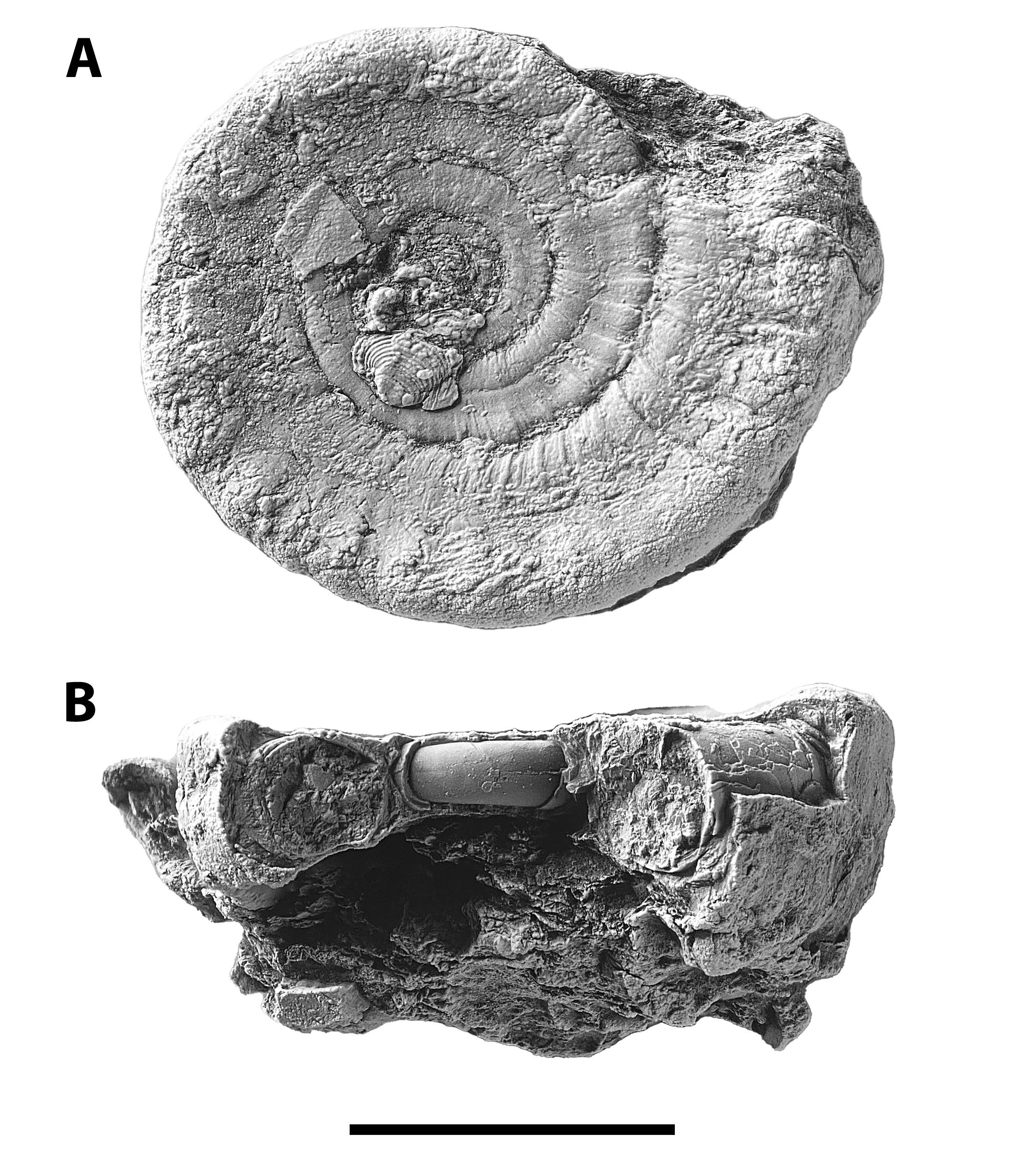
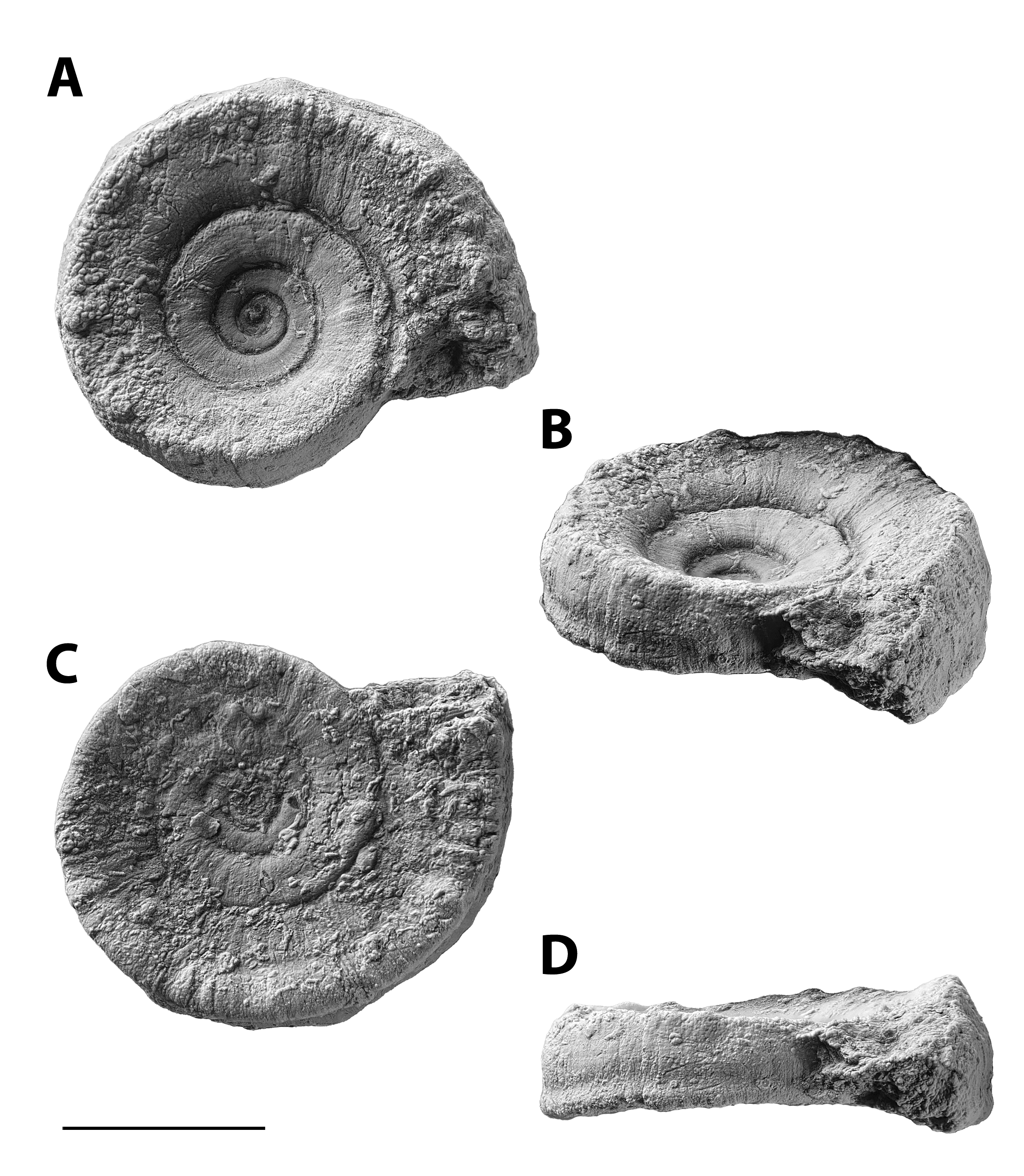
References
- de Koninck, L.G., 1883. Faune du calcaire carbonifère de la Belgique, 4e partie, Gastéropodes (suite en fin). Musée Royale d’Historie Naturelle Belgique Annales, Série Paléontoloque 8:1-240
- Knight, J.B., 1942. Four new genera of Paleozoic Gastropoda. Journal of Paleontology 16(4):487-488
- White, C. A., 1877. Report upon the invertebrate fossils collected in portions of Nevada, Utah, Colorado, New Mexico, and Arizona, by parties of the expeditions of 1871, 1872, 1873, and 1874. Report upon United States geographical surveys west of the one hundredth meridian. Volume 4, Paleontology. Government Printing Office, Washington, D.C. 219 pp., 21 plates. p. 158.

Late Carboniferous Fossils from the Glenshaw Formation in Armstrong County, Pennsylvania
Preface | The Photographic Process
Localities: Locality SL 6445 Brush Creek limestone | Locality SL 6533 Pine Creek limestone
Bivalvia: Allopinna | Parallelodon | Septimyalina
Cephalopoda: Metacoceras | Poterioceras | Pseudorthoceras | Solenochilus
Gastropoda: Amphiscapha | Bellerophon | Cymatospira | Euphemites | Glabrocingulum | Meekospira | Orthonychia | Patellilabia | Pharkidonotus | Retispira | Shansiella | Strobeus | Trepospira | Worthenia
Brachiopoda: Cancrinella | Composita | Isogramma | Linoproductus | Neospirifer | Parajuresania | Pulchratia
